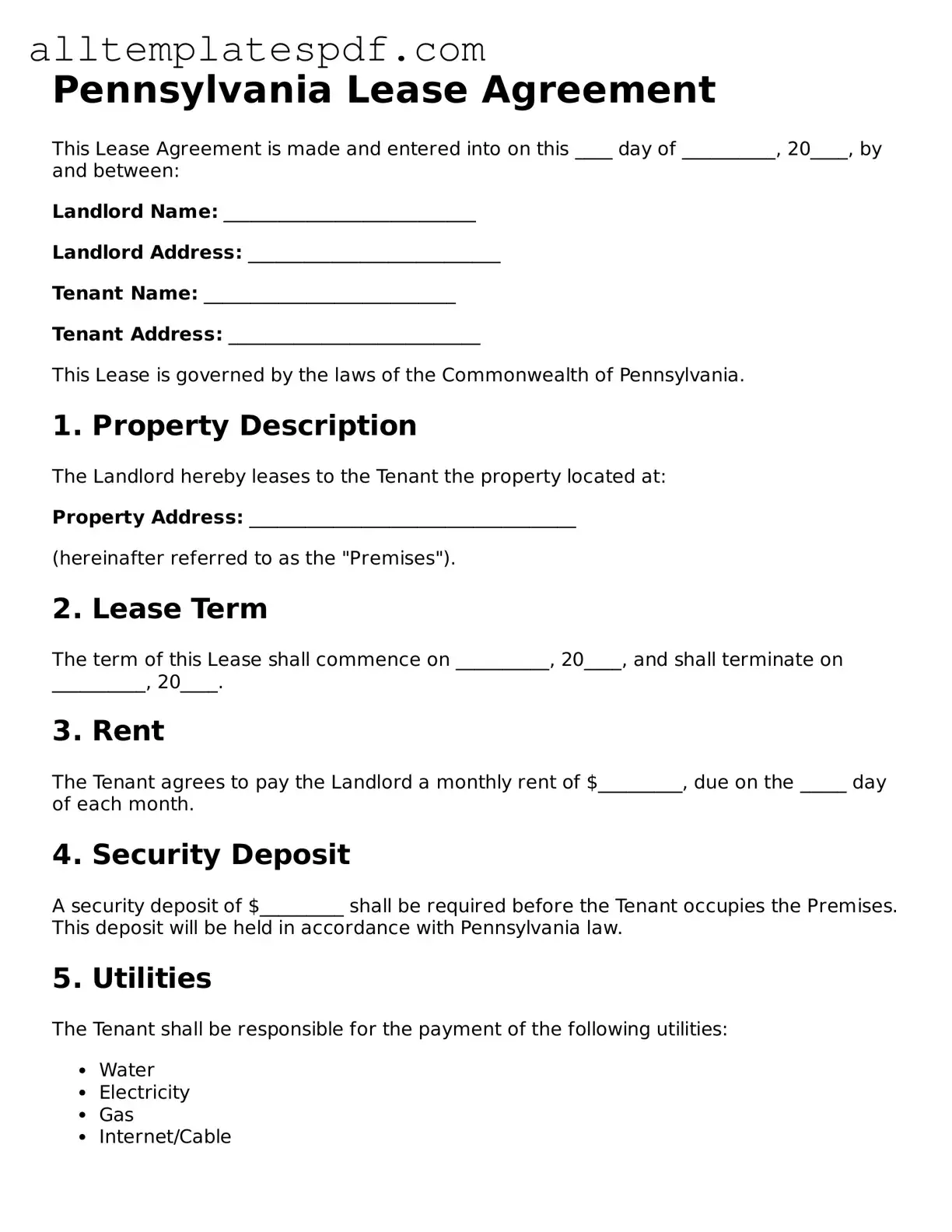When filling out the Pennsylvania Lease Agreement form, many individuals overlook important details that can lead to complications later on. One common mistake is failing to include all necessary parties. It’s essential to list every tenant and landlord involved in the agreement. Omitting a name might create confusion or disputes about who is responsible for what. Ensure that everyone who will be living in the property is included, as well as all landlords, to avoid any misunderstandings.
Another frequent error is not specifying the lease term clearly. The lease term indicates how long the agreement will be in effect, whether it’s for a year, six months, or month-to-month. Without a clear term, both parties may have different expectations about when the lease begins and ends. This can lead to conflicts over move-out dates and rental payments. Be precise in defining the start and end dates to ensure everyone is on the same page.
People also often neglect to outline the rent payment details adequately. It’s not enough to state the rent amount; you should also include when the payment is due, acceptable payment methods, and any late fees that may apply. If these details are vague or missing, it can lead to confusion and disagreements down the line. Clear payment terms help both the landlord and tenant understand their financial responsibilities.
Lastly, many individuals forget to read the entire agreement before signing. It’s easy to skim through documents, especially when they are lengthy, but this can result in missing critical clauses or provisions. Each section of the lease can contain important information about rules, maintenance responsibilities, and termination conditions. Taking the time to read the lease thoroughly ensures that all parties are aware of their rights and obligations.
